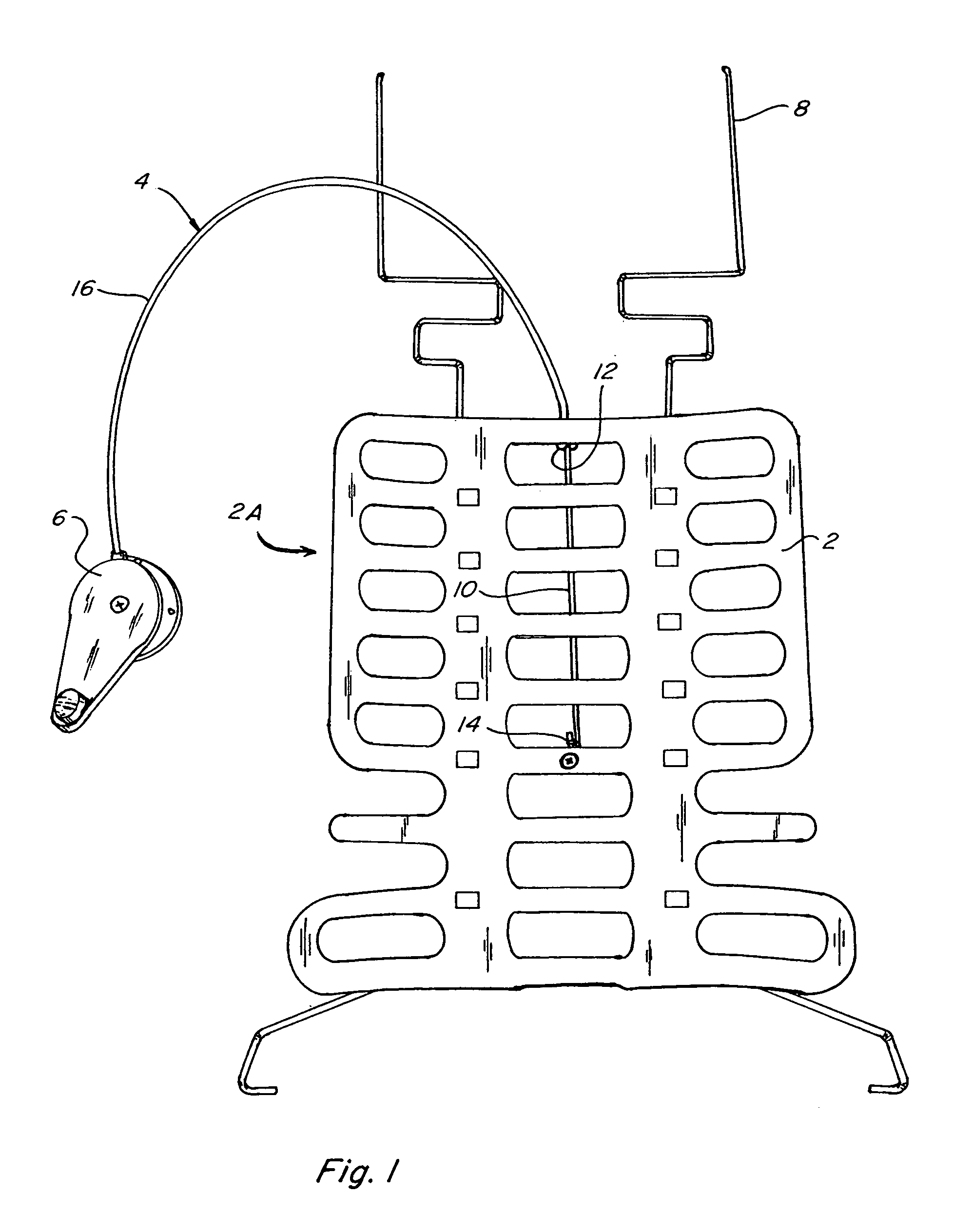Apparatus and method for braking ergonomic support actuator
a technology of ergonomic support and actuator, which is applied in the direction of cycle brakes, mechanical control devices, process and machine control, etc., can solve the problems of increasing the cost of the actuator both in terms of the number of parts required and their assembly, and devices that do not wear well, etc., to achieve the effect of quick response to the pressure on the pin
- Summary
- Abstract
- Description
- Claims
- Application Information
AI Technical Summary
Benefits of technology
Problems solved by technology
Method used
Image
Examples
Embodiment Construction
[0029]Referring to the accompanying drawings in which like reference numbers indicate like elements, FIG. 1 illustrates a continuously positionable lumbar support and its relationship to a Bowden cable 4 and actuator 6. The pressure surface 2 is mounted to guide rails 8 and at least one portion of the arching pressure surface 2 slides up and down along guide rails 8. Bowden cable 4 includes a Bowden cable wire 10. A Bowden cable sleeve 16 is mounted to one end of the arching pressure surface 2 at a sleeve mount 12. The Bowden cable wire 10, which slides axially through the Bowden cable sleeve 16, is mounted to another portion of the arching pressure surface 2, at Bowden cable wire mount 14. When actuator 6 is engaged, it puts traction on the Bowden cable wire 10 drawing it axially into Bowden cable sleeve 16. This is turn puts tractive force on the arching pressure surface 2 at the Bowden cable wire mount 14 drawing it and the Bowden cable sleeve mount 12 closer together. This cause...
PUM
 Login to View More
Login to View More Abstract
Description
Claims
Application Information
 Login to View More
Login to View More - R&D
- Intellectual Property
- Life Sciences
- Materials
- Tech Scout
- Unparalleled Data Quality
- Higher Quality Content
- 60% Fewer Hallucinations
Browse by: Latest US Patents, China's latest patents, Technical Efficacy Thesaurus, Application Domain, Technology Topic, Popular Technical Reports.
© 2025 PatSnap. All rights reserved.Legal|Privacy policy|Modern Slavery Act Transparency Statement|Sitemap|About US| Contact US: help@patsnap.com



